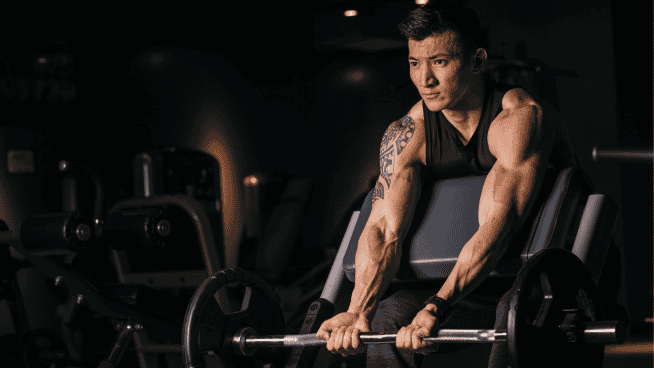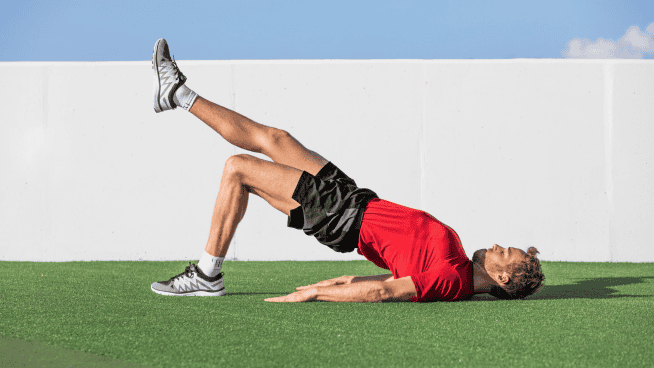Training With ‘Intent’ Is a Concept Too Many Young Athletes Fail to Appreciate
“Athletes are either compliant or competitive.”
I heard that phrase for the first time recently, and I quickly thought about how true it was when it came to sports performance training.
Strength and conditioning coaches spend a significant amount of time designing training programs that will bring out the best of our athletes. The exercise selection, the sets, the reps, the load—every factor is considered when trying to give our athletes a competitive edge.
However, none of that matters unless the athletes themselves put forth great effort while executing that plan. Showing up and just “going through the motions” in the weight room doesn’t cut it. This is where we get to the concept of “training with intent.”
Intent is defined as your intention or purpose. When you train, what’s the purpose of that training? What’s inside your mind as you train? Is your intent simply to get through the workout and go home, or is it to push your body to become bigger, stronger, faster, more explosive and more resilient?
Many athletes show up on time, execute the training program as it’s written, and are on their way. These are the ‘compliant’ athletes.
The competitive athletes are different. They show up at the same workout, follow the same workout program, but are competitive as they do it. They think of the connection between what they’re doing in training and what they do in their sport. Athletes with great intent:
- Challenge themselves by continuously adding weight
- Focus on each rep with great form and technique
- Are mindful of their rest time between sets
- Try to be better/stronger at a lift today than they were the last workout
- Get out of their comfort zone by pushing themselves harder in the weight room than a coach ever possibly could
When talking to coaches in regards to exercise selection, sets, reps, etc, I often tell them that these things both “matter and don’t matter.” It’s like a zen riddle. Exercise selection and sets/reps are key factors in designing training programs, but they don’t matter if athletes don’t execute them with great intent.
Athletes with great intent do not settle for sloppy, lazy reps. Athletes with great intent seek the struggle that comes with truly challenging themselves. Athletes with great intent draw confidence from their training because they know it’s truly helping them improve.
Intent can make a huge difference in how an athlete approaches and executes a workout. Let’s say athlete A and athlete B both come into the weight room healthy and ready perform the same workout.
Athlete A comes in and adds enough weight each set to perform the prescribed workout, but not enough to make him truly uncomfortable. His approach to each rep is very casual in that he “just wants to get it done.” He doesn’t think about what muscles are supposed to be activating during certain exercises, and he doesn’t think about how his rivals might be working at that very same moment. He technically finishes the workout as prescribed and leaves the weight room.
Athlete A was compliant.
Now, let’s look at Athlete B. He comes in and gets to work. He has great energy and attacks each exercise, adding weight so that he’s challenged on each set. He focuses on performing each rep with excellent form and moving the weight at the appropriate tempo. He respects and follows his programmed rest intervals because he knows they’re there for a reason. His heart rate is up and his muscles burn. It’s not just about “getting it done” for him. It’s about getting better and competing during the workout.
Athlete B was competitive.
It was the same workout, the same weight room, the same equipment, the same coaching staff, the same environment. However, the athlete’s approach was different. And it was all about mindset. Athlete B could’ve performed the workout the same way as Athlete A, but he had greater aspirations.
We often equate outworking someone with performing more sets and reps than them and working out longer than them. But that’s often a recipe for overtraining and diminishing returns. Outworking someone also doesn’t mean loading the bar with too much weight and performing the exercise with terrible, ineffective form.
More athletes need to think about how they can outwork someone who’s following a similar workout program to their own. Because odds are, your rivals are performing many of the same exercises and drills you are, and they’re likely utilizing a similar number of sets and reps. How do you outwork that person? By approaching your training with great intent.
This isn’t limited to just the weight room. Speed and agility training, sport-specific practices, pre-game warm-up—all of these things are done better when they are done with the mindset of doing it with a great intent.
Things like exercise selection, sets and reps matter, but they also don’t. Because you could have the most well-designed program in the world, but if it’s not executed with great intent, the results aren’t going to be very inspiring.
Make sure your athletes don’t just show up and be compliant in your training sessions. Make sure they show up and are competitive. Remind them why they’re training in the first place, and what they should be thinking or feeling on certain drills and exercises. Because for all the work you do to create that program, it’s their intent that will ultimately set them apart from the the competition or keep them stuck in the middle of the pack.
READ MORE:
RECOMMENDED FOR YOU
MOST POPULAR
Training With ‘Intent’ Is a Concept Too Many Young Athletes Fail to Appreciate
“Athletes are either compliant or competitive.”
I heard that phrase for the first time recently, and I quickly thought about how true it was when it came to sports performance training.
Strength and conditioning coaches spend a significant amount of time designing training programs that will bring out the best of our athletes. The exercise selection, the sets, the reps, the load—every factor is considered when trying to give our athletes a competitive edge.
However, none of that matters unless the athletes themselves put forth great effort while executing that plan. Showing up and just “going through the motions” in the weight room doesn’t cut it. This is where we get to the concept of “training with intent.”
Intent is defined as your intention or purpose. When you train, what’s the purpose of that training? What’s inside your mind as you train? Is your intent simply to get through the workout and go home, or is it to push your body to become bigger, stronger, faster, more explosive and more resilient?
Many athletes show up on time, execute the training program as it’s written, and are on their way. These are the ‘compliant’ athletes.
The competitive athletes are different. They show up at the same workout, follow the same workout program, but are competitive as they do it. They think of the connection between what they’re doing in training and what they do in their sport. Athletes with great intent:
- Challenge themselves by continuously adding weight
- Focus on each rep with great form and technique
- Are mindful of their rest time between sets
- Try to be better/stronger at a lift today than they were the last workout
- Get out of their comfort zone by pushing themselves harder in the weight room than a coach ever possibly could
When talking to coaches in regards to exercise selection, sets, reps, etc, I often tell them that these things both “matter and don’t matter.” It’s like a zen riddle. Exercise selection and sets/reps are key factors in designing training programs, but they don’t matter if athletes don’t execute them with great intent.
Athletes with great intent do not settle for sloppy, lazy reps. Athletes with great intent seek the struggle that comes with truly challenging themselves. Athletes with great intent draw confidence from their training because they know it’s truly helping them improve.
Intent can make a huge difference in how an athlete approaches and executes a workout. Let’s say athlete A and athlete B both come into the weight room healthy and ready perform the same workout.
Athlete A comes in and adds enough weight each set to perform the prescribed workout, but not enough to make him truly uncomfortable. His approach to each rep is very casual in that he “just wants to get it done.” He doesn’t think about what muscles are supposed to be activating during certain exercises, and he doesn’t think about how his rivals might be working at that very same moment. He technically finishes the workout as prescribed and leaves the weight room.
Athlete A was compliant.
Now, let’s look at Athlete B. He comes in and gets to work. He has great energy and attacks each exercise, adding weight so that he’s challenged on each set. He focuses on performing each rep with excellent form and moving the weight at the appropriate tempo. He respects and follows his programmed rest intervals because he knows they’re there for a reason. His heart rate is up and his muscles burn. It’s not just about “getting it done” for him. It’s about getting better and competing during the workout.
Athlete B was competitive.
It was the same workout, the same weight room, the same equipment, the same coaching staff, the same environment. However, the athlete’s approach was different. And it was all about mindset. Athlete B could’ve performed the workout the same way as Athlete A, but he had greater aspirations.
We often equate outworking someone with performing more sets and reps than them and working out longer than them. But that’s often a recipe for overtraining and diminishing returns. Outworking someone also doesn’t mean loading the bar with too much weight and performing the exercise with terrible, ineffective form.
More athletes need to think about how they can outwork someone who’s following a similar workout program to their own. Because odds are, your rivals are performing many of the same exercises and drills you are, and they’re likely utilizing a similar number of sets and reps. How do you outwork that person? By approaching your training with great intent.
This isn’t limited to just the weight room. Speed and agility training, sport-specific practices, pre-game warm-up—all of these things are done better when they are done with the mindset of doing it with a great intent.
Things like exercise selection, sets and reps matter, but they also don’t. Because you could have the most well-designed program in the world, but if it’s not executed with great intent, the results aren’t going to be very inspiring.
Make sure your athletes don’t just show up and be compliant in your training sessions. Make sure they show up and are competitive. Remind them why they’re training in the first place, and what they should be thinking or feeling on certain drills and exercises. Because for all the work you do to create that program, it’s their intent that will ultimately set them apart from the the competition or keep them stuck in the middle of the pack.
READ MORE:










